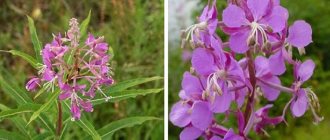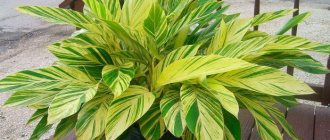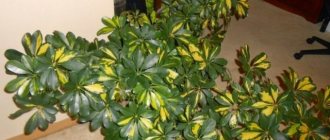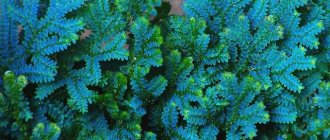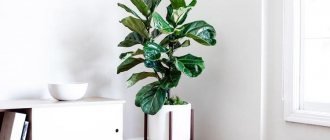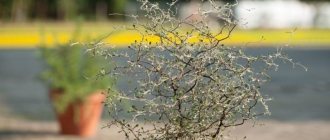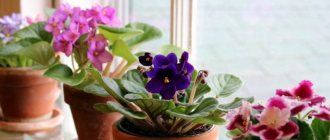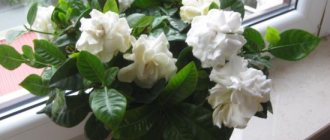Indoor flowers: photos and names in alphabetical order
In catalogs, indoor flowers with photographs and names are usually arranged alphabetically, their homeland, requirements and other data are indicated. We propose to get acquainted with groups of indoor plants and several of their prominent representatives.
List of indoor medicinal plants
Medicinal indoor plants include:
- aloe;
- Kalanchoe;
- Golden mustache;
- ficus;
- geranium or pelargonium;
- begonia;
- cyclamen;
- Indian onion;
- American agave;
- tradescantia;
- hibiscus or Chinese rose;
- dracaena;
- Dioscorea or yam;
- peppermint;
- money tree, crassula or crassula;
- pike tail;
- primrose;
- common myrtle;
- lavender;
- sage. {1}
Medicinal flowers can be used internally in the form of tinctures and decoctions, and externally as lotions. In addition to their healing effect on the body, they purify the air, improve the indoor microclimate, suppress the growth of pathogenic bacteria, and also improve mood and even improve performance.
Beautifully blooming indoor flowers with photos and names
This group is the favorite for many gardeners. Bright colors of flowers, a wide variety of plants, it’s easy to choose a flower that will fit perfectly into the conditions of the apartment. Representatives of this group have certain requirements for habitat and care. For successful flowering, such plants require fertilizer with the optimal composition, so use fertilizer marked “For flowering plants.”
Azaleas or Rhododendrons Sims (lat. rhododendron simsii)
These are small shrubs strewn with bright large flowers. The foliage is dark green in color, the leaves are pubescent on the underside, and have a dense leathery covering on the front. The small leaves very favorably set off the magnificent white, red, pink, and sometimes two-color buds. The flower petals can be double or simple, but they are all quite large in size.
Azalea requires bright light, but allows partial shade. Abundant watering is needed during flowering at intervals of 2-3 days. In other periods, it is enough to water the flower up to twice a week. The optimal temperature does not exceed 15 degrees.
ADVICE!
It is better to place the azalea on a tray of gravel and keep it moist. Flowers must not be wetted!
Rhododendrons do well in heather soil and in a shallow, wide container. Non-lime fertilizer should be applied once a month. Azaleas live up to 7 years if they are well cared for and taken out onto the veranda during the dormant period. But the life of this riot of colors in the apartment is limited to a few weeks.
Rhododendron: what kind of flower is it? In a special publication on our portal, we will tell you in detail about this unusual flower, what types it comes in, what beneficial properties it has, how to properly grow, propagate, feed and prune.
Anthurium (lat. anthurium)
Popularly called “male happiness” or “tongue of fire”. The plant is a perennial, blooming red all year round. The inflorescence can be pink, yellow, white, always in the form of a cob. Heart-shaped leaves of dark green color on long petioles reach 40 cm. The height of the plant ranges from 40 to 80 cm, growing half a meter in width.
A man's happiness lasts for 3 years, then the leaves fall. To make the flower comfortable, partial shade or diffused light is required in the complete absence of drafts. Watering is carried out once every 4 days, fertilizing is carried out every three weeks during the warm period of the year.
ADVICE!
Anthurium needs to be sprayed daily and at the same time manage not to get any drops on the inflorescence.
Special requirements: at temperatures below 10˚C, the leaves turn yellow and fall off. To make hibiscus bloom better, trim their stems in March, leaving only 2 eyes on each.
Gloxinia (lat. sinningia)
It is a flowering plant that reproduces by tubers. If you are unfamiliar with this plant, bought it, admired its beautiful large gramophone flowers from April to August, and then suddenly the plant disappeared and dried up - don’t rush! The peculiarity of gloxinia is such that when it fades, it will most likely retire, leaving nothing but bare earth as a reminder of itself. Meanwhile, the tuber will undergo an important life period. The soil is suitable deciduous heather with humus.
Gloxinia leaves are beautiful in themselves: long, up to 20 cm, with delicate fluff and edges resembling scallops, they are arranged in a rosette. The plant itself does not exceed 30 cm in height.
The flower responds favorably to diffused sunlight, but it does not like direct sunlight.
There is no need to waste time on spraying - it is contraindicated for leaves. And you need to water the beauty once every three days by lowering the pot into settled water at 22-25 degrees for 10-15 minutes.
IMPORTANT
The earth ball should not dry out completely between waterings!
From the end of September, watering is reduced, and after the leaves fall until new shoots appear, the plant is not watered.
Nolina Bocarnea
Nolina Bocarnea is a member of the agave family, also called the “bottle palm” due to the shape of its crown. Leaves are lanceolate, drooping. Nolina tolerates dry climates and temperature changes well. But palm trees like high humidity; the soil must always be moist, otherwise the tips of the leaves will begin to dry out. The powerful root system accumulates enough moisture to ensure normal plant growth during periods of drought.
Direct sunlight is not harmful, but in the shade of Nolin, bocarney does not grow readily.
They are replanted once every 4 years, but fertilizers are applied regularly 2 times a month.
The main difficulties with watering: overwatering or underwatering lead to negative consequences.
Sun-loving, beautifully flowering indoor plants
To choose a place for indoor plants, it is sometimes useful to know where their homeland was. And if the flower came from the equatorial zone, but grew under the cover of the jungle, then it will easily tolerate shading. But if the plant’s homeland was an open sunny space, then without a daily dose of sunlight, success will not be achieved.
Let's look at the photo and learn more about some indoor plants that are lovers of sunbathing.
Primrose (lat. primula)
A perennial flowering plant with evergreen leaves up to 15 cm long. The foliage is corrugated and forms a rosette.
Bright primroses
The inflorescences are collected in umbrellas or solitary, the corollas are double or simple. There are varieties that combine a silvery coating on the petals and two-color petals or a bright core. There may be no smell.
In order for the flowering to be bright and long, it is better to choose the lightest place and water it in such a way that the soil is always moist. The leaves themselves cannot be watered.
It is better to place the pot on wet gravel. Primrose loves geranium soil and fertilizers.
IMPORTANT
After the plant has flowered, it is transferred to partial shade.
Fuchsia (lat. fuchsia)
They are evergreen or deciduous, erect or may have drooping stems.
The flowers resemble small, up to 8 cm, lanterns and are pleasing to the eye from mid-May until the first frost. Color range: white, pink, red, pink-lilac, purple, combining two colors. The leaves are oval, matte, located opposite on red stems. The edges of the leaves are serrated.
Magic fuchsias
The plant loves a certain amount of direct sunlight, so you need to place the pot where the sun shines in the first or second half of the day.
Watering depends on the air temperature, but the substrate should dry out between waterings. The plant is sprayed twice a week. Replanting is needed annually, and young plants need to be replanted several times a season into enriched garden soil with sand.
In summer, fuchsias are usually taken outside into some shade.
ATTENTION!
During flowering, fuchsia must not be rotated or rearranged!
Persian cyclamen (lat. cyclamen persicum)
Herbaceous tuberous plant with a long flowering period. The flowers are admired during the cold season: the magical bent flowers of white, pink, and red tones begin to bloom, usually in November, and end in March-April. The leaves are heart-shaped and dark green in color with a beautiful whitish-silver pattern.
Cyclamen blooms very vigorously Cyclamen
Cyclamen loves direct sunlight while flowering.
Replant in the fall in deciduous humus with sand and peat.
It is difficult to make cyclamen bloom again in an apartment, however, with the help of annual replanting and regular fertilizing, the plant continues its life cycle.
Shade-tolerant flowering indoor plants: photos and names
This is a section dedicated to flowering indoor plants (with photos and names) that thrive in shaded conditions. For many plants of that group, bright light is destructive.
Balsams (lat. Impatiens)
The perennial shade-tolerant plant is considered a godsend for lovers of unpretentious care and bright flowering. The stems are erect, somewhat transparent and succulent. The leaves reach 10-12 cm, can be toothed, lanceolate or oval, green or purple-bronze. There are hybrids with variegated foliage.
The handsome plant blooms from early May to December with flat corollas (4 cm) with spurs. There are double flowers with a wide range of colors, excluding blue and yellow.
It is necessary to water abundantly and maintain the air temperature at 20 degrees.
With regular feeding twice a month, the plant can reach 60 cm in width and height. However, there are also low-growing varieties.
ADVICE!
If you want to leave the balsam after flowering, it is better to renew it by cuttings.
Streptocarpus (lat. streptocarpus)
A shade-tolerant flowering herbaceous beauty that blooms in the warm season with funnel-shaped flowers of various shades. Flowers are located on long peduncles. The leaves, depending on the variety, can grow up to 2 or up to 35 cm and are collected in rosettes. The leaf of the plant is oblong, matte, green, corrugated and covered with fluff.
In summer, Streptocarpus loves shade. Features of watering include a small amount of water in summer (twice a week) and sufficient water in winter (every 8-9 days).
ADVICE!
It is better to spray the air around the plant with water.
Streptocarpus grows up to 30 cm in width and the same in height. Lifespan: 3 years.
IMPORTANT
The plant reacts negatively to tobacco smoke!
Clivia cinnabar (lat. clivia miniata)
This plant has a massive rhizome and is considered stemless because its hard, belt-like leaves resemble a fan spread around the rosette. The leaf length varies from 30 to 50 cm. Clivia blooms in February and until April you can admire its red-orange or yellow flowers. An umbrella inflorescence of 12 funnel-shaped flowers is located on a thick, long peduncle.
Clivia
Clivia cinnabar thrives in partial shade or dim light.
This plant is perfect for those who sometimes forget about watering their plants: they prefer to drink clivia once a week, and at the end of autumn even once a month. But even during flowering there is no need to flood the flower!
Plant height is 50-60 cm, sometimes more. It’s great that the lifespan is long, about 15 years.
IMPORTANT
The plant will bloom only when wintering at 9-10 degrees.
Of course, in our list of shade-loving indoor plants you did not see all the names and photos, but chose the most common and easy to care for.
Medicinal pelargonium or geranium
The most common indoor plant is geranium. Flower growers love it for its beautiful flowers, ability to heal and purify indoor air.
The most healing geranium is considered to be the one that blooms in bright red bouquets.
Pelargonium is endowed with astringent, soothing, and anti-inflammatory properties. Her abilities are known:
- normalize heart function;
- provide assistance in the treatment of acute and chronic gastrointestinal diseases;
- relieve pain from stomach and duodenal ulcers;
- help in the treatment of gastritis;
- get rid of dermatitis, boils, ulcers, carbuncles in the form of lotions and compresses.
Medicinal decoction of geranium
- 1 tbsp. Brew a spoonful of leaves or rhizomes of a houseplant with a cup of boiling water,
- keep in a water bath for 5-7 minutes,
- strain while hot through 3 layers of gauze,
- squeeze, then add water to the initial volume.
Drink 1 tbsp. l. three times a day a quarter of an hour before meals. To get rid of external problems, the broth is diluted with water 2 times.
From pressure
A treated infusion of the plant's roots is most often drunk to lower blood pressure and solve problems of the heart and blood vessels.
Geranium with honey
For pleurisy, you can simply chew 2-3 young geranium leaves twice a day, eating 1 tbsp. l. honey 30 minutes before meals.
The plant secretes such strong substances that it kills streptococci and staphylococci, and also has a calming effect, relieving stress and insomnia. Therefore, the best place for him is the bedroom.
Indoor poisonous plants (photos and names)
Before you buy any indoor plant, make some inquiries - what if your plant is poisonous, and despite its external beauty, you shouldn’t bring a potential threat to all inhabitants into the house?
Dieffenbachia
The advantages of the beautiful Dieffenbachia: tall growth, spreading burdock leaves with different color options, the ability to improve the quality of the air around it... but the plant juice is poisonous! If the integrity of the plant is damaged and the poison gets on the skin or mucous membranes, then gastrointestinal and respiratory problems are possible. If juice gets on your skin, burns may occur.
ATTENTION!
Caring for Dieffenbachia is carried out only with gloves!
Dieffenbachia
Dieffenbachia often grows as a spreading bush
Euphorbia
If a curious child picks the skin of a plant and sees white juice, so similar to milk, then the following consequences are possible: diarrhea, nausea, dizziness, serious burns of the mucous membrane.
The milkweeds themselves are varied in form and, of course, beautiful. However, such beauty is not worth the risk.
Spurge
Euphorbia is very similar to a cactus with leaves.
Aloe striped, Aloe intimidating
The medicinal form of aloe looks like poisonous ones, the difference lies in the color of the plants. Striped and frightening can cause miscarriage, uterine bleeding, and serious disturbances in the functioning of the stomach.
Aloe awesome
Which plants are good for the home, according to folk wisdom?
Whether you believe in omens or not is your own business. But we have nevertheless compiled a small list of indoor plants, which, according to popular belief, can improve things in various areas of life.
- Tradescantia
takes on the negative energy of the house: the flower sheds its leaves and dies. - Ficus
brings comfort, harmony between spouses, prosperity and well-being to the house. - Violet
helps improve your personal life, get rid of anxiety and bad habits, such as overeating. We wrote earlier about other ways to stop stress eating. - Rosemary
helps older people maintain vitality, and makes it easier for pregnant women to tolerate toxicosis. - Cacti
are like lightning rods: they absorb electromagnetic radiation, and at the same time negativity, anger and irritation. - Cyclamen
is credited with the ability to transform negative energy into positive energy, as well as increase its owner’s self-confidence, determination and strength of character. - Golden mustache
(also known as “homemade ginseng”) is considered a donor plant that can heal both physical and mental wounds, and also help cope with blues and apathy. Traditional medicine knows many recipes using this plant. - Chlorophytum
rids the house of negative energy, helps to calm down and relieve stress. Perhaps that is why it can often be found in government institutions. In addition, chlorophytum perfectly purifies the air from harmful microorganisms.
Do you have indoor plants in your home?
Photos and names of indoor bulbous plants
Daffodils (lat. narcissus)
These beautiful early flowers are associated with spring. They can be grown both at home and outside.
Narcissus
The leaves are very long, although depending on the variety they can be 15 cm or 60 cm. The leaf itself is long and erect with a slight concavity. The flowers are white or yellow, located on a long flexible peduncle, one or several at a time. The flower itself looks like a crown surrounded by 6 lobes.
Today, varieties of pink and even orange flowers have been developed. Daffodils love direct sunlight. Watering during flowering should be plentiful, and after that it is better to keep the plants dry. After flowering, it is better for the plant to move to the garden. In a pot, the daffodil will not exceed 50 cm in height.
Hippeastrum (lat. hippeastrum)
It will decorate any room with both long fleshy arched leaves up to half a meter and 2-4 flowers on a long peduncle. The diameter of the flowers is large, reaching up to 15 cm. Color options: pink, white, carmine-red, two-color.
Hippeastrum Hippeastrum flower
Flowering duration does not exceed 3 weeks. It is better to place the pot in a place near the window, without direct sunlight hitting the plant. Hippeastrum is not picky about water; it is enough to water it lightly once a week.
ADVICE!
Feed the plant from the moment the buds appear until the foliage turns yellow once every two weeks.
After all the leaves turn yellow, the hippeastrum is transferred to a cool, dark room for 2.5-3 months, and then replanted.
Famous house flowers with small leaves
House leaf plants are quite varied. There are species that have small leaves, but they are also charming and beautiful:
- Hypocyrta. A plant with small leaves, yellow and orange flowers located throughout the trunk. Loves bright diffused light, spraying, abundant watering in summer, less moisture in cold periods.
- Abelia. An evergreen bush that loves light, but not direct sunlight. Do not overly moisturize, because the root system may rot.
- Kufeya. Gardeners really like the shrub for its long flowering period - from the beginning of spring to the end of autumn. Does not require special care, no need to overwater.
Hypocyrta is a beautiful plant with small leaves and bright flowers
Indoor climbing plants (photos and names)
Multi-flowered jasmines (lat. jasminum polyanthum)
They are classified as liana plants.
Jasmine blooms with white star flowers, 5 petals each. Attractive strong aroma. This plant will perfectly decorate the interior, as it is evergreen, and its climbing vines look very impressive. Jasmine multiflorum
The pot is placed in bright sunlight and watered twice a week in winter, and once every 2-3 days in the warm season.
ADVICE!
Jasmine loves humid air and spraying!
Unlike many flowers, jasmine loves to be fed not during flowering, but after it for 6 months in a row.
The vine grows up to 2 m and grows for about 10 years in a greenhouse or glassed-in loggia. The apartment is decorated with jasmine for no longer than six months.
Application of hanging plants
Gardeners enjoy hanging plants as green hedges, decorations for summer gazebos and garden arches.
At home, they easily fit into the interior and become living decor for walls and windows. Look great in hanging planters at home and on the balcony.
To decorate the balcony
When decorating a loggia with hanging plants, you should take into account the climate of the area and the side on which the balcony faces. For rainy regions, species such as ampelous dichondra, scevola, and sutera are suitable.
On the sunny side, ampelous verbenas and euphorbias feel good.
In the interior
Climbing plants are very convenient to use for interior decoration, because they do not require much space on the windowsill and fit organically into the decor, located in hanging pots.
Tradescantia and chlorophytum are suitable for kitchen decoration; quarry and begonias do well in the bedroom. For the living room, it is better to choose vines with large foliage such as monstera, nephrolepis or philodendron.
Ampelous indoor plants (photos and names)
This section is about house flowers, which have long, hanging, flexible shoots that can either stretch upward or crawl along the ground. We came up with three interesting flower names with photos to familiarize yourself with these types of plants.
Columnaea (lat. columnea)
Fragile stems droop and hang down. The smooth leaves of this evergreen plant are small, elliptical, and have some pubescence. In spring, bright red flowers of 7 cm with a yellow throat begin to bloom. Columnaea flower looks like a hood.
Columnea Columnea with yellow flowers
Columnaea likes to stand in partial shade, but diffused lighting is also suitable. Successful cultivation is guaranteed in the absence of drafts and the following watering regime: 3 times a week in the summer and 1 time in the winter.
IMPORTANT
Columnia is demanding of high air humidity!
This beauty grows up to 90 cm in length and lives in greenhouse conditions for 5 years.
Rhoicissus
The plant is popularly called “birch tree”. There are many types of rhoicissus, in general they are distinguished by rhombic-shaped leaves. The plant belongs to the grape family; its resemblance to a vine is enhanced by long shoots with tendrils that cling to the support.
The plant is unpretentious, with good lighting and lack of waterlogging it grows quickly.
The leaves consist of several rhombic leaflets, the underside is covered with fleecy pubescence, the upper side is emerald green and smooth. Unpretentious plant
Ivy (lat. Hedera)
Known, perhaps, to everyone: the flower is unpretentious, shade-tolerant and easily propagated by cuttings. The plant in nature reaches 30 m, but even in an apartment it can completely wrap around a support or window.
Ivy Ivy hanging in a pot
The plant does not like direct sunlight and moving the pot. All species have some differences in leaf shape. They can be pointed, star-shaped, or oval.
Ivy grows well in moderate light and regular watering during the warm season.
Features of care
Most hanging species love good lighting. In the shade, their shoots become very elongated, the leaves become smaller, and the plants lose their decorative properties.
Particular attention is paid to the formation of vines
Planting and propagation
Plant ampels in hanging flowerpots, inserting pots with pallets into them and making sure to create a drainage substrate. Watering should be frequent.
The most competent and simple way to propagate ampelous plant species is cuttings. Any piece of shoot can be cut off from a vine. The cuttings are placed in water, where they quickly take root.
Proper plant formation
Climbing flowers are well adapted to independently inhabit various types of supports. However, to give them a beautiful shape, the growth of young shoots should be directed in time, securing them in the desired position.
Transplantation
Transplantation is carried out using the transshipment method:
- Carefully shake off the old earthen ball from the roots, take a pot 2-3 cm larger than the old one.
- Fill halfway with soil, insert the roots of the flower and sprinkle up to the neck of the stem.
- The operation is completed with abundant watering.
Mowing and fertilizing
If your vine has become too elongated or branched, feel free to trim off the excess parts: all ampels can easily tolerate pruning. For feeding, complex fertilizers with phosphorus and potassium are used.
Climbing plants always look impressive in the interior. From them you can create entire artistic compositions and use them to decorate recreation areas.
They respond well to care and do not clutter up the room.
Unpretentious indoor plants, their photos and names
Kohleria (lat. isoloma (kohleria))
A plant that blooms all year round with velvety tubular red or orange flowers is considered one of the most low-maintenance plants. Green, slightly pubescent, with fine teeth, the leaves perfectly set off the beautiful flowers.
Kohlerias love light partial shade and watering during the growing season and flowering once every 3 days.
The plant grows 60 cm and lives up to 3 years.
IMPORTANT
Leaves do not tolerate water.
Tradescantia
The undeservedly forgotten American plant has dozens of varieties and a common structure for all types: Long straight shoots with numerous branches represent a rather massive bush. Green, silver, purple with veins, striped Tradescantia blooms with small flowers also of different colors.
With moderate regular watering and placement in diffused sunlight, such a plant can delight for many years. Pruning only improves the appearance of Tradescantia.
Spathiphyllum Wallis (lat. spathiphyllum wallisii)
This plant with its 30-50 cm leaves on long petioles is very similar to a lush bush. The decorative qualities of spathiphyllum are beyond praise. White flowers with soft yellow, beige or white-green spadix appear throughout the year.
Spathiphyllum Wallis looks great when there is a lot of it Spathiphyllum Wallis Spathiphyllum grows in bright, diffused light and regular watering. It is best if the substrate is always moist and without stagnant water. With feeding and proper care, the plant lives for 10 years.
Tips for a florist: how to care for the “Women’s Happiness” flower or spathiphyllum In a special publication on our portal, we will tell you in detail about the flower, which is called “Women’s Happiness,” how to properly grow, propagate, feed and pruning, and what problems you may encounter.
Yucca care technology
Yucca also has long, narrow leaves and looks a bit like dracaena. This plant is quite tolerant of dry air, so it can be grown in apartment conditions. In its usual conditions, yucca can grow up to 14 meters, and indoors up to two meters.
The plant is not capricious in caring for it; dry leaves are periodically cut off, watered, and the temperature in winter is kept at least 18 degrees, and in summer the indicator should be moderate. Planting can be done in a special mixture of peat, sand, humus, deciduous and turf soil or purchased universal soil. The transplant is performed in the spring, which is the most favorable. If the container is large, then replace the top layer of soil.
Even in winter, the room is ventilated, but the plant is removed from strong temperature changes and drafts. The tree tolerates dry air favorably, so spraying is not necessary; sometimes you can wipe the leaves with a damp sponge to remove dust and give the bush a fresh look.
Photos of indoor flowers that should not be kept at home
For some reason, many people believe that indoor plants are harmless and simply decorate their living rooms. However, there are a number of scientific reasons that claim that not all plants can be kept at home. There are also folk beliefs associated with the energy of flowers.
Some plants emit or contain dangerous allergens and toxic substances. These are some types of ferns, aglaonema, euphorbia, oleander, monstera, alocasia, some ficus, anthurium, clivia, croton, poinsettia, rhododendron, cyclamen, lilies.
Poinsettia
Aglaonema
Alocasia Monstera
Oleander Croton
If you believe in folk superstitions, then refuse to keep ivy of any kind at home - you will remain an old maid, and throw away all the cacti - your husband will become an alcohol addict. What should those who don’t have a husband do? Leave the cacti alone and let them grow. And if you want freedom and loneliness - go ahead, get the ivy!
Decorative foliage indoor plants, their photos and names
This group is characterized by diversity in foliage color and patterns and minor flowering. These indoor plants are considered practically non-flowering. We suggest looking at their photos and finding out their names.
Climbing
Monstera deliciosa (lat. monstera deliciosa)
These are climbing vines of impressive size. Even the laziest gardener can grow a monstera, since it needs abundant watering, but once a week in the summer, and 2 times a month in the winter. A pot with such a vine will be comfortable in partial shade or in diffused light. Once a week, the huge carved dark green leaves should be washed with a damp cloth.
Monstera
The plant still blooms, but the flowers are expressed by cream-colored cobs.
IMPORTANT
Monstera needs support, as it grows 3 meters upward and reaches 1.5 m in width.
Upright
Araucaria (lat. Araucaria)
It can replace the New Year tree with its delicate needles. Tree-like plant, branches arranged in tiers. The older the tree, the darker the needles. The plant does not produce cones in indoor conditions.
Araucaria should grow in a bright place, out of direct sunlight. The plant loves abundant weekly watering in winter, more frequent in summer.
ADVICE!
Araucaria should not stand next to heating appliances.
For this coniferous beauty, it is better to choose a long-lasting granular fertilizer for conifers.
Interestingly, at home the tree will not exceed 3 m, but in natural conditions you will be surprised to see a 60-meter Araucaria.
Croton (lat. codiaeum)
One of the most spectacular plants in appearance. The amazingly colored leaves look like blades and can be rounded or pointed at the ends. Colors that can be simultaneously seen on croton leaves: green, yellow, orange, red.
Croton
The flowering is completely inconspicuous. Croton grows on western windowsills to receive direct sunlight in the evening. In winter, water the plant less, allowing the substrate to dry out, and in the warm season, water frequently and abundantly. A handsome adult occupies a space of 1 meter around him. Dimensions of croton (codiaum): up to 1 m in height and width.
ADVICE!
Young shoots should be pinched for greater bushiness.
Bokarneya - a flower with long, thin and narrow leaves (with photo)
Bokarneya
First of all, because of its unusual shape and unpretentiousness, this plant is very popular today. The cortical trunk, up to 1.5 m high at the base, is very thick. Long thin leaves are evenly spaced around the stem-trunk. The leaves are lanceolate, gray-green, and grow up to 60 cm in length. Under natural conditions in Central America, this shrub can reach 10 m in height. Another name for this indoor plant with long leaves is bottle tree.
Family. Agavaceae (Agave).
Homeland. Mexico.
Location. Sunny light.
Temperature. Warmth is necessary in summer; in winter, a period of rest should be provided at 10-15 °C.
Air humidity. Doesn't matter.
Substrate. Leaf soil mixture with the addition of loam and sand.
Shrubs
Aglaonema (lat. aglaonema)
Small, shrub-like plants. The stems of the plant are short, and the leaves reach 20 cm. Externally, the leaf looks like a lancet located on a long petiole. The color is variegated with silver elements. Blooms with inconspicuous flowers
Aglaonema
Aglaonema is placed away from windows; the plant feels great in poor lighting. Caring for aglaonema is the same as for other plants: regular watering in the warm season, once a week in winter, frequent spraying and fertilizing twice a month from late April to September is encouraged.
ADVICE!
Do not smoke near this plant and avoid drafts - aglaonema is sensitive to air purity.
The plant has bactericidal properties.
Palms and trees
Chamaedorea
This bamboo palm is considered very low maintenance. A spreading beauty from Central and South America has arrived. Such palm trees are often used to decorate offices, hotels, and the halls of business centers.
Basic care requirements: moderation. Moderate lighting, since in the shade the palm tree will wither, and in bright light its leaves will get burned. Moderate watering - the earthen ball should be constantly wet, but not waterlogged due to the owner’s zeal! In winter, watering is reduced and the palm tree is kept at a temperature of 15 degrees.
Hamedorea
Succulent indoor plants (photos and names)
Succulents are a large group of plants native to the southern arid countries that store moisture inside their stems.
Kalanchoe (lat. kalanchoe)
A variety of succulents with carved oval leaves and wonderful long flowering. The leaves can be either smooth or velvety, with a striped underside. Some species have small shoots at the tips of the leaves that easily fall off and germinate immediately - a simple and convenient way to propagate a plant.
Flower petals are collected in a cup, or can be drooping inflorescences. There are a lot of buds, but they do not all bloom at once. Kalanchoe loves light windowsills, but without a lot of direct sunlight. Water twice a week in the warm season, and in winter no more than 2 times a month. The life of a plant in an apartment lasts up to 6 years, and large varieties live for 10 years.
Kalanchoe: care at home, beneficial properties of the plant In a special publication on our portal, we will tell you in detail about Kalanchoe, what types it comes in, what beneficial properties it has, how to properly grow, propagate, feed and pruning.
Sedum (lat. sedum)
One of the most unpretentious succulents with exotic appearance. The dense leaves appear dense, fleshy, oblong or rounded. The plant blooms with star-shaped yellow, red or white flowers.
sedum
Sedums prefer a bright place, with shade at midday. The plant is watered once a week starting in March. In winter, it is enough to water once a month.
Schlumbergers (lat. schlumbergera)
A wonderful forest cactus that is strewn with flowers in winter. The plants are popularly called Decembrists.
Schlumberger
Only non-hybrid forms of cactus have a spine. Flowers are scarlet, pinkish, white, both with bent petals and not. Flowering lasts throughout the winter months.
Place the pot in a bright window with diffused sunlight and water once a week until December, and during flowering, and also every three days from late spring.
ADVICE!
During flowering, the pot is not moved.
Abutilon or Indoor maple
Belongs to the mallow family, it is called indoor maple for its similarity to the tree of the same name. It was brought to the country from the tropics, because of this the plant loves sunny color and grows quite quickly.
Care
- It should be placed in a sunny place, preferably on a loggia.
- Indoor maple will grow well and develop at a temperature of 15-16 degrees in summer, and 10-15 in winter.
- In the warm season, the plant should be watered abundantly.
- The room where the flower will be placed must be well ventilated.
- It is best to propagate indoor maple trees in the spring.
- The soil for replanting should be loose.
- If the plant has grown, it is better to prune it. This should be done in winter.
- In spring, it is advisable to feed indoor maple trees with nitrogen fertilizers.
- It can be propagated by cuttings.
Fruit houseplants, their photos and names
There are indoor indoor plants that will not only decorate your living space with their appearance, but will also bear edible fruits. Here are the names and photos of some fruit-bearing indoor plants: lemons, tangerines, kiwi, figs, pineapple, mini peppers and even pomegranate.
Indoor lemon
It differs from its relatives in dwarf varieties that bear fruit in apartment conditions and bear up to 20 lemons. Indoor lemon smells very strongly, corresponding to its name, and is very decorative, because it does not have a dormant period, and on the tree you can always see green glossy foliage and flowers, and lemons.
The plant needs additional lighting and warmth, but it is better to cover heating devices, if they are nearby.
Indoor lemon
Figs
In the house it begins to bear fruit in the first year. They care for figs just like lemons, but remember that the tree sheds its leaves at the end of October. A rest period is required; it is tedious to move the figs to a cool place and shade them with a dark cloth. It is good to lower the tree into the basement and water it as little as possible. After a while, the plant will begin to develop new buds, which means it’s time to return the figs to the bright windowsill.
Figs
We covered a very small part of the catalog of indoor plants, but we hope that our article turned out to be informative and educationally useful.
Indian onion
The Indian onion shown in the photo also has medicinal properties and good reviews. But it also has a poisonous effect. Therefore, it is suitable for the treatment of gout and joint diseases. It can heal damaged muscles. Juice, which has anti-cancer properties, is used as a medicinal raw material.
The plant contains a very expanded list of various substances that have:
- Antithrombic and anti-inflammatory effect.
- Analgesic and vasoprotective effect.
Applicable for:
- Oral diseases and immune disorders.
- Diseases caused by infections and skin damage.
- Papillomas and warts.
Infusion of Indian onion in water.
Trim the onion leaves located at the bottom and chop them very finely. Next, place them in a glass container and fill with water. The ratio should be 1 to 10. The medicine is infused for 7 days. A basement is suitable for this purpose. The container is shaken periodically. And when the medicine is ready, you need to strain it and use it 3 times a day.
Balm.
A balm that includes Indian onions is used for rubbing for osteochondrosis of the neck. Also suitable for rubbing joints throughout the body. To prepare it, do the following:
The onion leaf needs to be very finely chopped and crushed to obtain a homogeneous mass similar to gruel. Now take Vaseline or any fat base and add it to this mixture. And add honey and mix everything well.
Ficus
It turns out that ficus benjamina also has medicinal properties, which you will read about in our publication. The range of applications of this plant in the form of infusions and rubbings is very wide; we will name only a few positions, namely:
- Hemorrhoids and furunculosis,
- Dysentery and toothache,
- Women's ailments.
The plant contains poisonous juice, so if it comes into contact with the skin, irritation may occur.
Treatment with ficus should be postponed if you have asthma and are pregnant or breastfeeding. Childhood and gastrointestinal diseases are also contraindications.
Recipes for using ficus.
If a tumor is present, a small amount of leaves is crushed and squeezed. Honey is added to ficus juice. Take 1 teaspoon every day for 7 days. Next, they give the body a rest for 7 days and start taking it again.
- To treat hemorrhoids, a piece of cotton wool is moistened with juice and inserted into the anus.
- When treating hematomas and bruises, cakes made from rye flour and ficus juice are used.
- And to get rid of tooth pain, you need to soak gauze in alcohol tincture.
Alcohol tincture.
You will need 300 ml of alcohol and 3 leaves of the plant. Also add 10 ml of iodine and camphor to the container. The mixture is stirred and sent to infuse in the basement. It should infuse for a month. Afterwards the tincture is used for rubbing.
Geranium
Probably every resident of our country has a fragrant geranium. Therefore, the medicinal properties of the flower may be familiar to you, but it is worth mentioning the most important ones. In general, geranium is a powerful antiseptic that relieves pain and accelerates the healing of wounds of any degree. The flower is suitable for the treatment of viral diseases and has an anti-cancer effect.
Decoctions on water.
A decoction containing geranium helps relieve sore throat and cough. You will need 20 grams of dry leaves. They are poured with boiling water. You will need one glass. Next, the medicine should be infused for 8 hours. Afterwards, the broth is filtered and used to gargle.
Constipation can also be cured with geranium. For this purpose, 100 ml of tincture is taken orally 2 times a day.
Fresh geranium leaves.
Fresh leaves of an indoor flower are also a useful medicine. For example, to treat a cold, fresh leaves are applied to the feet and wrapped in a warm blanket.
To lower the pressure, a fresh sheet is applied to the wrist and removed after half an hour.
And to relieve pain in the ear, you need to crush a fresh leaf and put it in the ear canal.
Cyclamen
The cyclamen flower in the photo is also used in folk medicine. Its medicinal properties make it possible to treat some women's diseases, as well as sinusitis and headaches. The juice of an indoor flower can boast an excellent antiviral effect. It is also therapeutic for unhealthy gastrointestinal tracts.
You can apply pulp from the cake to sore spots; lotions are used in the treatment of hemorrhoids.
When treating sinusitis, juice is used, which should be freshly squeezed. Oil is added to it in an amount of 1:10. Place 1 drop into the nostrils. After use, the patient begins to sneeze - this means the medicine is effective. When it passes the nose, rinse with water.
For gastrointestinal diseases, an infusion of the roots of the plant is used in the amount of 1 tablespoon and 2 cups of boiling water. The infusion should steep for 20 minutes, and then filter it. Take a quarter glass 3 times a day.
Crassula (money tree)
Crassula is the most popular indoor plant. The healing properties of this flower are very similar to those of aloe. As a rule, healthy leaves located below are used for treatment.
Recipes.
Money tree is very good at treating hemorrhoids. For this purpose, juice is used, which is mixed with petroleum jelly to obtain a homogeneous mass. The ointment is applied to a cotton swab and applied to the hemorrhoid for 30 minutes. You need to make 3 such compresses a day.
You can cure a runny nose with the following remedy: fatty juice and cooled, already boiled water in a ratio of 1 to 2.
Acne on the skin can also be cured. For this purpose, take the juice or leaf of a flower, cut in half. They just wipe it down, I think every day.
In addition to what was listed, the money tree will also help you get rid of coughs and herpes. It is also used in the treatment of foot fungus.
Saxifraga
The plant has lush flowering. In addition to its anti-inflammatory properties, it also has a diuretic and antipyretic effect. Used for stones in the bladder and kidneys. It has a good effect on stomach ulcers. The plant can relieve pain and have an antibacterial effect, so it is often used for purulent wounds and frostbite.
Contraindications include: pregnancy and breastfeeding, hypersensitivity, as well as individual intolerance.
Tradescantia
Tradescantia medicinal, which is an indoor resident, can boast of anti-inflammatory and diuretic abilities. Can be used to improve the functioning of the heart and blood vessels. It also has a good effect on the nervous system and normalizes proper metabolism.
Plant treatment.
To get rid of a sore throat you need: take the juice of the plant and dilute it with boiled water at room temperature. Proportions are 2 to 1. The solution is suitable for rinsing.
For bronchitis. Take 250 ml of red wine or Cahors, 100 ml of plant juice and honey. Propolis is also added to the composition. The ingredients are mixed and infused for 2 weeks in the basement. It is also necessary to shake this composition. Should be taken 15 minutes before meals. The medication is taken for a month, followed by a break of 2 weeks.
If you have periodontal disease, then use fresh juice to lubricate your gums 5-6 times a day.
In order to get rid of rhinitis, you need to instill 2 drops of fresh Tradescantia juice into your nose.
Echinacea
Echinacea has not only medicinal properties, but also contraindications. In particular, the plant is used to enhance immunity. Echinacea is also used for flu, herpes and intestinal infections.
Recipes.
Dry or fresh leaves can be used to prepare a decoction. But they should already be crushed. They are poured with a glass of boiled water and the dishes with the mass are placed in a water bath. He should stay there for 5-10 minutes. The decoction is then infused and applied 100 ml 3 times a day.
Echinacea can be used even by children. Its use is prescribed to develop immunity and respiratory diseases.
To increase your vitality, you should use a plant extract. If we talk about the dosage of the medicinal tincture, adults take 8 drops, and children no more than 5.
If blood pressure is high or if you are overexcited, do not use the drug!
Agave americana
The external appearance of the American agave, whose medicinal properties are widely known, is somewhat reminiscent of aloe. Many people know this plant in folk medicine. And this is all because it is famous for its unique healing properties. In its composition you can see not only useful vitamins, but amino acids and essential oils. Due to these properties, agave extract is used in the manufacture of many medicines. But what else is different about this plant? So:
- The plant fights swelling and promotes rapid healing of wounds.
- Agave Americana treats gastrointestinal diseases, has an antipyretic and anti-inflammatory effect.
- A houseplant that stands on the windowsill can repel mosquitoes and flies.
Recipes.
American Agave will heal many ailments. For example, to cause sputum discharge, you need to combine fresh flower juice with honey. Use 3 times a day.
The following composition will help strengthen the immune system: take 100 grams of juice and squeeze the juice from two lemons. Mix everything together, add honey and walnuts. To achieve homogeneity, the solution should be heated in a water bath.
A tincture is prepared based on alcohol and agave leaves, which is used to rub problem areas for osteochondrosis and radiculitis.
Contraindications for consuming the plant.
Of course, you should postpone taking agave-based medicines if:
- Are pregnant or breastfeeding.
- The child is under 15 years of age.
- Do you suffer from hepatitis or cystitis?
Hibiscus
Perhaps, hibiscus medicinal properties and contraindications, which you will read further, is a fashionable indoor plant. This plant is rich in a variety of substances that can relieve you of cramps and pain. The plant is also famous for its excellent diuretic and choleretic effect. Hibiscus is even used in anthelmintic therapy.
Recipes.
For abscesses and boils, the flowers of the plant are ground into a paste. Next, make a compress and apply it to the affected area.
Iced hibiscus tea can help lower blood pressure. It is also recommended to drink this drink to restore strength.
This plant will also be useful for diabetes.
In addition to its beneficial properties, hibiscus has a number of contraindications. People with gastrointestinal diseases should not drink tea from this flower. Also, you should not drink tea if you have acute urolithiasis.

